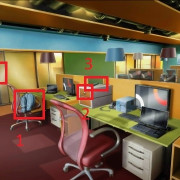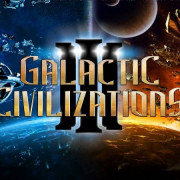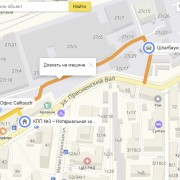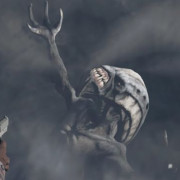Lost cities
Содержание:
- La Ciudad Blanca: Город Обезьяньего Бога
- 31. Skara Brae[SEE MAP]
- Calakmul’s great rival Tikal
- 11. Ctesiphon[SEE MAP]
- Gordium: King Midas’ great capital
- Сигирия: Восьмое Чудо Света
- 2. Angkor[SEE MAP]
- 24. Mohenjo-daro[SEE MAP]
- Helike: an ancient Greek city that sank
- Derinkuyu underground city was used until 1923
- Trivia
- Levels
- The lost city of La Ciudad Perdida
- 3. Tikal[SEE MAP]
- 3 Heracleion: The Drowned Egyptian City
- 14. Vijayanagara[SEE MAP]
- 30. Memphis[SEE MAP]
- 10 Helike: The Real-Life Atlantis
- 1 La Ciudad Blanca: The City Of The Monkey God
- Timgad was once a thriving Roman colony
- Palmyra was once a very wealthy merchant city
- La Ciudad Perdida: Потерянный Колумбийский город
- 6 Sigiriya: The Eighth Wonder Of The World
- Ханаду: Дворец Хубилай-Хана
La Ciudad Blanca: Город Обезьяньего Бога
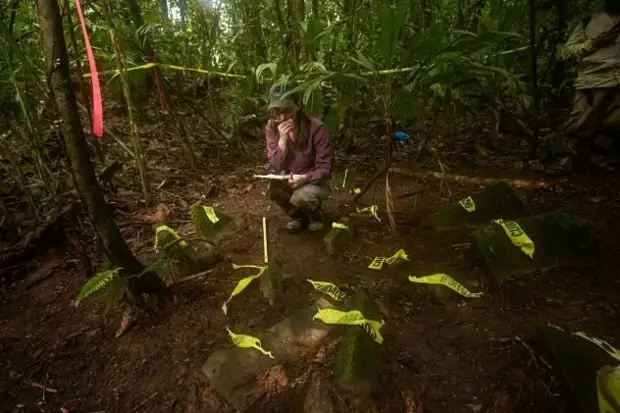
Фото: Дэйв Йодер,National Geographic
В поисках золота до Эрнана Кортеса дошли слухи о том, что в джунглях Гондураса скрывается город с огромными богатствами. Одни называли его Белым городом, другие-Городом Обезьяньего Бога, и ему обещали невероятное состояние.
Кортес так и не нашел его—но легенда продолжала жить. Чарльз Линдберг утверждал, что видел его летящим над страной, а другие распространяли слухи, что они нашли его, но по какой-то причине не могли сказать, где он находится, и город остался не более чем легендой.
Археологи, возможно, действительно нашли его. Группа последовала по пути, описанному одним из самых безумных людей, которые утверждали, что нашли место, и, к их удивлению, они на самом деле нашли город, где он сказал, что это будет. Они нашли пирамиду в тропическом лесу, построенную культурой, которая исчезла 1000 лет назад. Внутри были тайники каменных скульптур и впечатляющей архитектуры, которые, по меркам их соседей, считались бы признаками невероятного богатства и власти.
Некоторые люди сомневаются, действительно ли это тот город, о котором писал Кортес, но, в любом случае, это свидетельство потерянной цивилизации людей, которые всю свою жизнь жили в джунглях, отделенные от жизни, и само существование которых было почти забыто до сих пор.
31. Skara Brae[SEE MAP]
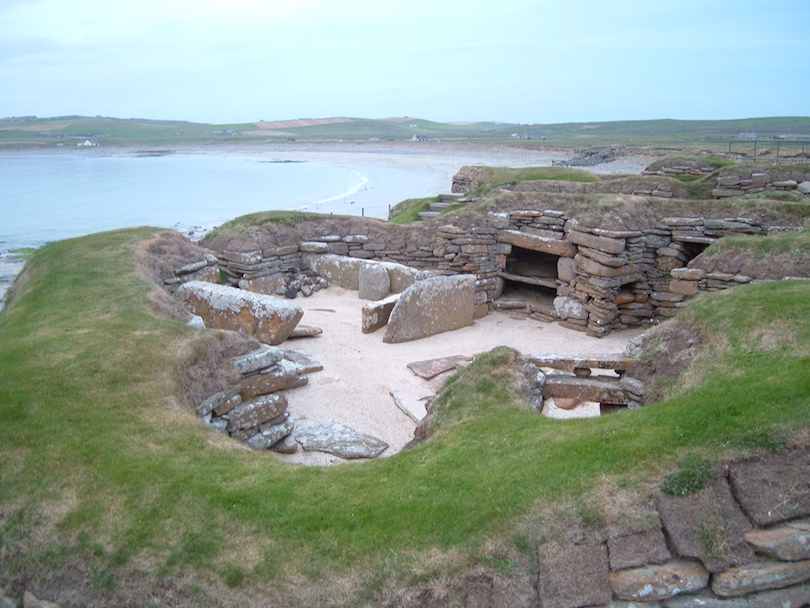
flickr/chatirygirl
Located on the main island of Orkney, Skara Brae is one of the best preserved Stone Age villages in Europe. It was covered for hundreds of years by a sand dune until a great storm exposed the site in 1850. The stone walls are relatively well preserved because the dwellings were filled by sand almost immediately after the site was abandoned. Because there were no trees on the island, furniture had to be made of stone and thus also survived. Skara Brae was occupied from roughly 3180 BC–2500 BC. After the climate changed, becoming much colder and wetter, the settlement was abandoned by its inhabitants.
Calakmul’s great rival Tikal

was one of the largest Mayan cities between 200 and 900 AD, with a population of around 100,000 — 200,000 inhabitants. It is thought to have been called Yax Mutal and can be found in the rainforests of Guatemala.
It was once the capital of a state that would become one of the most powerful kingdoms in Mayan civilization. Some finds suggest the city was occupied as early as the 4th century BC, but it reached its full power during Europe’s middle ages.
The city became a victim of its own success when its demand for timber led to deforestation, erosion, and subsequent famine. Between 830 AD and 950 AD, its population plummeted and Tikal was eventually deserted.
Tikal was reclaimed by the Guatemalan rainforest until the ruins were uncovered by European gum snappers in the mid-1800s.
11. Ctesiphon[SEE MAP]
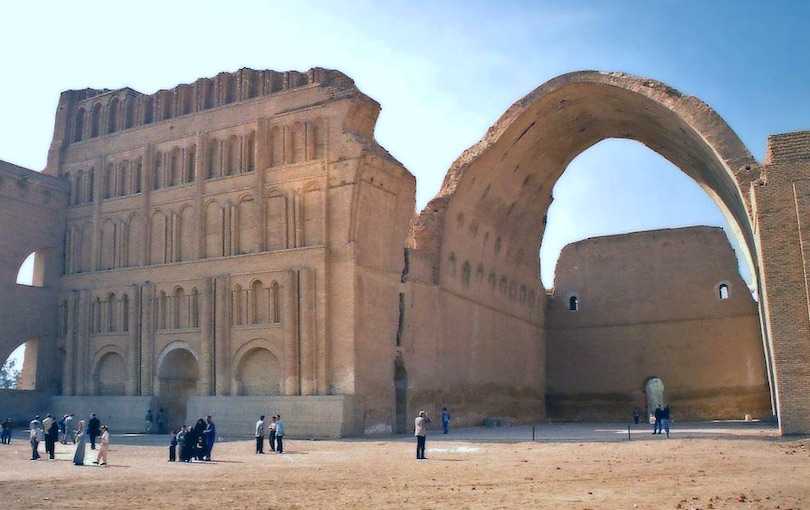
flickr/Nick Maroulis
In the 6th century Ctesiphon was one of the largest city in the world and one of the great cities of ancient Mesopotamia. Because of its importance, Ctesiphon was a major military objective for the Roman Empire and was captured by Rome, and later the Byzantine Empire, five times. The city fell to the Muslims during the Islamic conquest of Persia in 637. After the founding of the Abbasid capital at Baghdad in the 8th century the city went into a rapid decline and soon became a ghost town. Ctesiphon is believed to be the basis for the city of Isbanir in the Thousand and One Nights. Located in Iraq, the only visible remain today is the great arch Taq-i Kisra.
Gordium: King Midas’ great capital

, or Górdion (pronounced Gor-di-yon) in Turkish, was the capital city of the ancient Phrygian Empire. Located in Asia Minor, it is roughly 47 miles (75 km) SW of Ankara.
The city lies on what was once the ancient road between Lydia and Assyria that crossed the Sangarius River. Gordium’s most famous ruler was the quasi-legendary King Midas.
Gordium was sacked by the Cimmerians and subsequently abandoned in around 800 BCE but was rebuilt by the Persians.
Alexander the Great is said to have visited the city and solved the puzzle of the Gordian Knot, which said that whoever could loosen the knot would rule Asia — Alexander is said to have solved this problem by simply cutting the knot.
The forgotten city was rediscovered and excavated in 1900 by Gustav and Alfred Korte, and later by the Pennsylvanian Museum, between 1950 and 1973.
Сигирия: Восьмое Чудо Света
 В Шри-Ланке в пятом веке нашей эры царь Кассапа построил свой дворец на вершине валуна высотой 200 метров (650 футов). Согласно легендам, это был один из самых невероятных замков в мире. Чтобы попасть внутрь, нужно было подняться по большой лестнице, которая проходила через пасть массивного кирпично-гипсового льва.
В Шри-Ланке в пятом веке нашей эры царь Кассапа построил свой дворец на вершине валуна высотой 200 метров (650 футов). Согласно легендам, это был один из самых невероятных замков в мире. Чтобы попасть внутрь, нужно было подняться по большой лестнице, которая проходила через пасть массивного кирпично-гипсового льва.
Кассапа недолго прожил в своем замке. Вскоре после того, как он был завершен, его брат Могаллана напал. Армия Кассапы покинула его, испугавшись за свою жизнь, а его жены спрыгнули с валуна навстречу смерти. Сигирия была завоевана и оставлена как памятник царскому избытку. На какое-то время он стал форпостом, а затем буддийским монастырем, но вскоре о нем забыли.
Однако когда европейские археологи начали исследовать эту историю, они обнаружили, что замок был настоящим. Там действительно был огромный лев, охраняющий лестницу, и действительно нужно было пройти через его пасть, чтобы попасть внутрь.
Внутри все еще более невероятно, чем рассказывают легенды. В одной части есть сверкающий белый парапет, который работает как зеркало, позволяя раздутому королю смотреть на свое отражение, когда он идет по своему дворцу.
ЮНЕСКО объявила Сигирию восьмым чудом света, и сегодня она является популярным туристическим направлением. Но долгое время это были не более чем забытые руины свергнутого тирана.
2. Angkor[SEE MAP]

Angkor is a vast temple city in Cambodia featuring the magnificent remains of several capitals of the Khmer Empire, from the 9th to the 15th century AD. These include the famous Angkor Wat temple, the world’s largest single religious monument, and the Bayon temple (at Angkor Thom) with its multitude of massive stone faces. During its long history Angkor went through many changes in religion converting between Hinduism to Buddhism several times. The end of the Angkorian period is generally set as 1431, the year Angkor was sacked and looted by Ayutthaya invaders, though the civilization already had been in decline. Nearly all of Angkor was abandoned, except for Angkor Wat, which remained a Buddhist shrine.
24. Mohenjo-daro[SEE MAP]
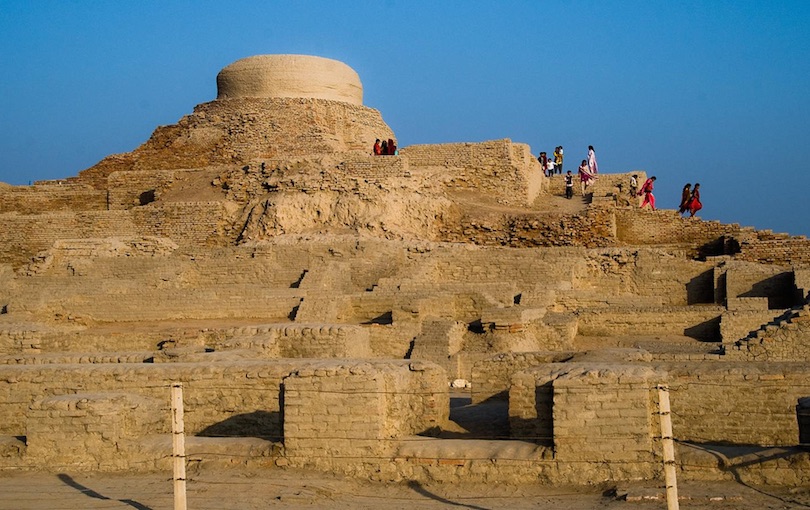
flickr/bennylin0724
Built around 2600 BC in present-day Pakistan, Mohenjo-daro was one of the early urban settlements in the world. It is sometimes referred to as “An Ancient Indus Valley Metropolis”. It has a planned layout based on a grid of streets, which were laid out in perfect patterns. At its height the city probably had around 35,000 residents. The buildings of the city were particularly advanced, with structures constructed of same-sized sun dried bricks of baked mud and burned wood. Mohenjo-daro and the Indus Valley civilization vanished without a trace from history around 1700 BC until discovered in the 1920s.
Helike: an ancient Greek city that sank

could very well be the real Atlantis. According to Greek legend, Helike was destroyed by an enraged and vengeful Poseidon for the Helikonians’ refusal to give their renowned statue of the sea god, or even a copy of it, to Ionian Greek colonists in Asia Minor (modern Turkey).
Based on accounts of ancient sources and on recent archaeology, it is believed that an earthquake in 373 BCE caused the groundbeneath the entire city to liquefy. A tsunami then engulfed the sunken city. According to ancient sources, the city disappeared in the space of just an hour or two and there were no survivors.
Helike was rediscovered in the 1980s by two archaeologists who had been searching for it for over a decade. It has since been partially excavated.
Derinkuyu underground city was used until 1923

an ancient multi-leveled underground city beneath the present-day Dernikuyu City in Turkey. The entire complex extends to a depth of around 197 feet (60 meters) and is thought to have housed around 20,000 people at its height.
It would have been a fully functional city with livestock and food stores and is the largest underground excavation in Turkey. It is one of several similar complexes across Cappadocia with some being connected together by miles of tunnels.
Derinkuyu was carved by hand into the relatively soft, sandy, volcanic rock of the region. The ‘city’ thrived throughout the Byzantine era and was used as protection by Christians from assailing Muslim Arabs during the Arab-Byzantine wars.
This strategy proved successful and they were used again during the Mongolian incursions of the 14th Century. When the Ottomans seized the area, the city was used on and off by locals fleeing from Ottoman reign right up to 1923.
After this time, the complex was largely forgotten until its rediscovery in 1963.
Trivia
- The post the construction Imps are on seems to have the head of a Snapdragon.
- EA’s official website uses «Lost City of Gold» as the name of this world.
Penny called it «The Fabled Lost City.»
-
Dr. Zomboss
This, however, contrasts the zombies’ looks.
talks normally in this world, hinting that this world is set near the present day.
- The music for Lost City’s Ultimate Battle theme uses the beginning of the Wild West Ultimate Battle theme and has some of the Ancient Egypt and Frostbite Caves
The Brainiac Maniac theme uses some of the music from the Dark Ages version in the beginning.
in the ending.
- Lost City’s Ultimate Battle and Brainiac Maniac use an orchestra and vibraphones in the beginning and end with an acoustic guitar.
- The instruments used to represent Lost City in Modern Day’s themes are the Bassoon and the Cattle Drums.
- A level with the same name and the same theme exists in the 1996 game Crash Bandicoot.
- This world is similar to Merlock’s Temple from the Disney Game Donald Duck: Goin’ Quackers.
- The music that plays on basic levels contains a few areas of silence compared to other worlds’ main themes.
- An area in Zuma’s Revenge!, another PopCap game, is also called Lost City.
- In the Epic Quest Aloe, Salut! and the Beghouled Beyond event, a night version of Lost City is present.
- Before the 5.2.1 update, there was a portal underneath the Gargantuar and Zomboss podiums.
- Before the 5.3.1 version, it was the eighth world on the world map order.
- This is the third world that has beneficial gimmicks, with the first being Wild West, and the second being Far Future.
- At the bottom left corner of the lawn, one can see a statue of Crazy Dave’s head.
- This world has exclusive boss fight music for phase 1. It is where Lost City’s instruments take part with the existing regular Zomboss battle theme.
- Frostbite Caves, Lost City, Modern Day, and Jurassic Marsh are the only worlds that don’t have unlockable plants from Plants vs. Zombies.
- In this world, there are no Last Stand levels.
Levels
Difficulty
Lost City is a medium world. It contains twelve somewhat hard-hard days (, , , , , , , , , , and ), and one very hard day (). However, there are many easy and medium levels. It has the same difficulty as the previous world, Frostbite Caves.
- Easiest level: Lost City — Day 1 or Lost City — Day 22
- Hardest level: Lost City — Day 30
Main levels
| Day | Plants | Zombies | Flags | First reward | Notes | |
|---|---|---|---|---|---|---|
| Chosen | Available | |||||
| Choice | N/A | One | ||||
| Choice | Three | Two | A money bag | |||
| N/A | Three | A money bag | Special Delivery level | |||
| Choice | One | Two | Mystery Gift Box | |||
| N/A | Three | A money bag | Special Delivery level | |||
| Choice | N/A | Three | ||||
| Choice | N/A | Three | A money bag | |||
| N/A | Two | Mystery Gift Box | Objective: Don’t let the zombies trample the flowersLocked and Loaded level | |||
| N/A | Three | A money bag | Special Delivery level | |||
| Choice | N/A | Three | ||||
| Choice | N/A | Three | A money bag | |||
| Choice | N/A | Three | Mystery Gift Box | Objective: Produce at least 5000 sun | ||
| N/A | Three | A money bag | Special Delivery level | |||
| N/A | Three | Mystery Gift Box | Locked and Loaded level | |||
| Choice | Two endangered | Three | A note | Save Our Seeds level | ||
| N/A | Three | A Mystery Gift Box | Gargantuar battle | |||
| Choice | N/A | Three | Mystery Gift Box | |||
| One | Two | A money bag | Special Delivery level | |||
| Choice | N/A | Two | ||||
| Choice | N/A | Two | Temple of Bloom | |||
| N/A | Two | A money bag | Locked and Loaded level | |||
| N/A | One (two in game) | A money bag | Locked and Loaded level | |||
| Choice | N/A | Three | Mystery Gift Box | |||
| Choice | N/A | Two | A money bag | Objective: Don’t let the zombies trample the flowers | ||
| Choice | N/A | Two | A money bag | Objective: Survive the zombie attack withmost plants picked for you | ||
| Choice | N/A | Two | ||||
| Choice | N/A | Three | A money bag | |||
| N/A | Two (three in-game) | Mystery Gift Box | Locked and Loaded level | |||
| Choice | N/A | Three | A money bag | |||
| Choice | N/A | Two | Mystery Gift Box | Objective: Survive without planting on Dave’s mold colonies | ||
| N/A | Two | A money bag | Locked and Loaded level | |||
| N/A | None | Lost City Trophy, Far Future key | Zomboss battle |
Special Delivery
- Main article: Special Delivery
Special Delivery is a Brain Buster that is a conveyor-belt level with the plants given via said conveyor-belt. Being a conveyor-belt level, no sun and sun-producing plants will be given. Starting from Big Wave Beach, most of its levels are featuring new plants.
It is playable on Days , , , and .
Save Our Seeds
- Main article: Save Our Seeds
In the Save Our Seeds levels, the player has to protect the endangered plants marked by a striped tile and his or her house too. If the player lets one of them be eaten by the zombies or disappear in some way, he or she will lose. Otherwise, it is a regular level, which the player can choose the plants to protect the endangered ones.
It is playable on Day , with two endangered A.K.E.E.s. This has the least amount of levels of its type in the world.
Locked and Loaded
- Main article: Locked and Loaded
Locked and Loaded is a regular Brain Buster with the plants chosen, and the player has to use them to defeat the zombies. Starting from Dark Ages, its levels will always feature a premium plant.
It is playable on Days , , , , and .
The lost city of La Ciudad Perdida

According to legend, around 1,300 years ago, a people called the Tairona were commanded by their gods to found the city of along a mountaintop in the Sierra Nevada de Santa Marta.
They would occupy the area for almost a millennia before the Spanish arrived in Columbia. Although the two civilizations never met face to face, the Tairona were wiped out by the diseases carried by the conquistadors.
Abandoned for hundreds of years, the settlement was found by a group of bandits in the 1970s, who plundered any valuables and sold them on the black market. Forgotten for almost 500 years, the city is now once again back on the map.
3. Tikal[SEE MAP]
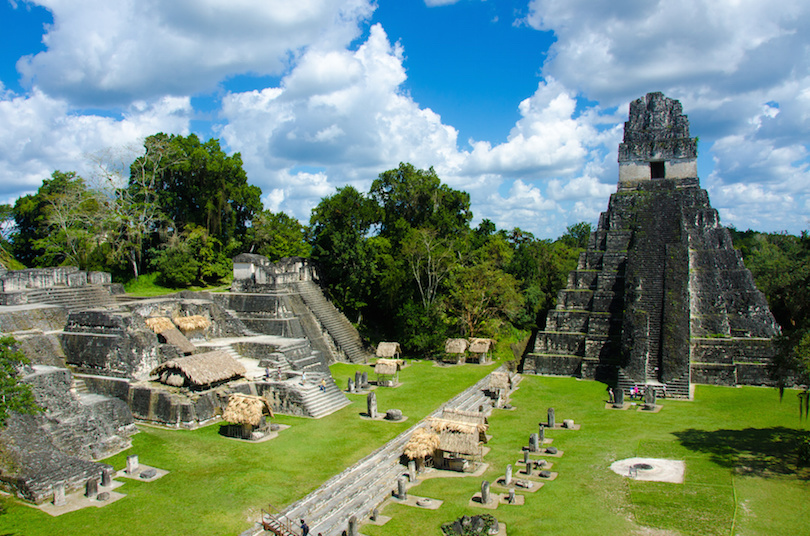
Between ca. 200 to 900 AD, Tikal was the largest Mayan city with an estimated population between 100,000 and 200,000 inhabitants. As Tikal reached peak population, the area around the city suffered deforestation and erosion followed by a rapid decline in population levels. Tikal lost the majority of its population during the period from 830 to 950 and central authority seems to have collapsed rapidly. After 950, Tikal was all but deserted, although a small population may have survived in huts among the ruins. Even these people abandoned the city in the 10th or 11th centuries and the Guatemalan rainforest claimed the ruins for the next thousand years.
3 Heracleion: The Drowned Egyptian City
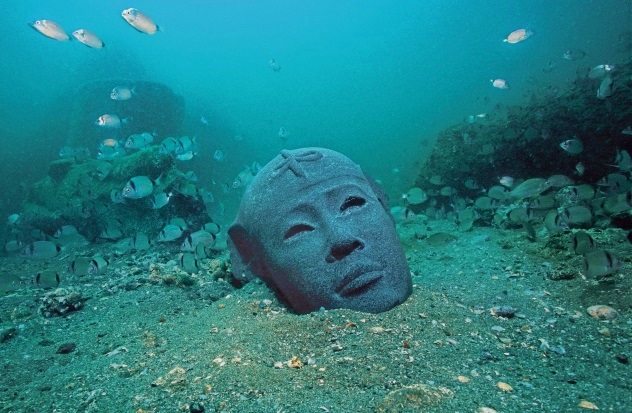
Photo credit: Christoph Gerigk/Franck Goddio/Hilti Foundation
Heracleion showed up in almost every Greek myth. It was the city where Heracles took his first steps into Africa. It was the place where Paris of Troy and his stolen bride Helen hid from Menelaus before the Trojan War. And we had no idea where it was.
As it turned out, there was a reason we couldn’t find one of Egypt’s most important ports: It was underwater. About 2,200 years ago, Heracleion was likely hit by an earthquake or a tsunami—and it drowned.
Divers swimming off the coast of Egypt stumbled upon it in the early 2000s. They found a strange rock under the water, and when they brought it up, they realized that it was a piece of an ancient statute. They dove back in to see what else was there. Soon, they’d found full statues, jewels, and even the drowned ruins of an ancient Egyptian temple.
A massive part of the city was still intact. Divers were able to find huge steles put up as notices to visitors, warning them, in hieroglyphics, of Egyptian tax laws. They found statues of ancient Egyptian gods, still in their original form, with fish swimming around them. It was an entire lost city, pulled from the depths of the water and brought back to life.
14. Vijayanagara[SEE MAP]
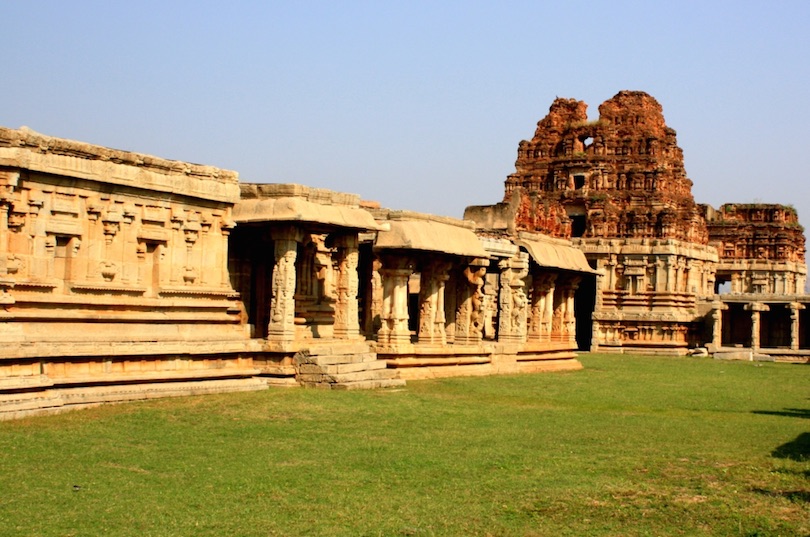
flickr/pcsjith
Vijaynagar was once one the largest cities in the world with 500,000 inhabitants. The Indian city flourished between the 14th century and 16th century, during the height of the power of the Vijayanagar empire. During this time, the empire was often in conflict with the Muslim kingdoms. In 1565, the empire’s armies suffered a massive and catastrophic defeat and Vijayanagara was taken. The victorious Muslim armies then proceeded to raze, depopulate, and destroy the city and its Hindu temples over a period of several months. Despite the empire continuing to exist thereafter during a slow decline, the original capital was not reoccupied or rebuilt. It has not been occupied since.
30. Memphis[SEE MAP]

flickr/IDS.photos
Memphis, founded around 3,100 BC, is the legendary city of Menes, the King who united Upper and Lower Egypt. Early on, Memphis was more likely a fortress from which Menes controlled the land and water routes between Upper Egypt and the Delta. By the Third Dynasty, Saqqara had become a sizable city. It fell successively to Nubia, Assyria, Persia, and Macedonia under Alexander the Great. Its importance as a religious centre was undermined by the rise of Christianity and then of Islam. It was abandoned after the Muslim conquest of Egypt in 640 AD. Its ruins include the great temple of Ptah, royal palaces, and a colossal statue of Rameses II. Nearby are the pyramids of Saqqara.
10 Helike: The Real-Life Atlantis
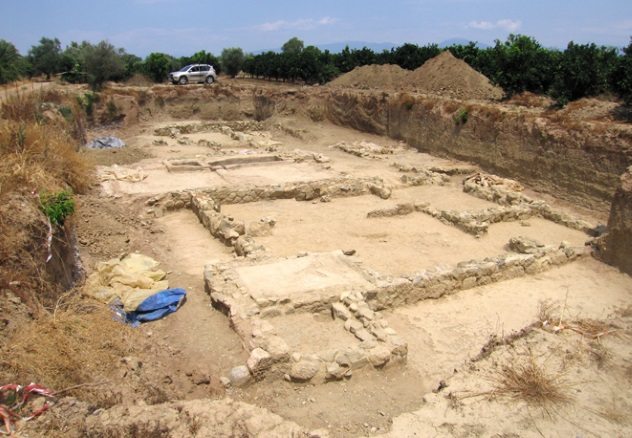
Photo credit: Drekis
Atlantis wasn’t the only mythical Greek city that sank under the water. The city of Helike met the same fate, and it shares every bit of Atlantis’s mythic power.
According to Greek myths, Helike was destroyed by the wrath of the god Poseidon. The city’s residents had driven the Ionian tribe, who were loyal worshipers of the god of the sea, out of Helike. In his fury, Poseidon pulled the whole city under the water in a single night.
Helike was destroyed in 373 BC, and for centuries, it was thought to be nothing more than parable—until it was found. In the late 1980s, two archaeologists started a quest to track it down. It took them more than a decade of work, but they found it. Over the centuries, Helike had been buried under the Earth. A mythic city was underneath their very feet.
The disaster that destroyed it, the team discovered, wasn’t exactly an act of Poseidon, but it would have felt like one. An earthquake liquefied the ground, turning the earth beneath the hapless Greeks’ feet into water as their whole city collapsed into an inland lagoon formed by the devastating tremor.
1 La Ciudad Blanca: The City Of The Monkey God
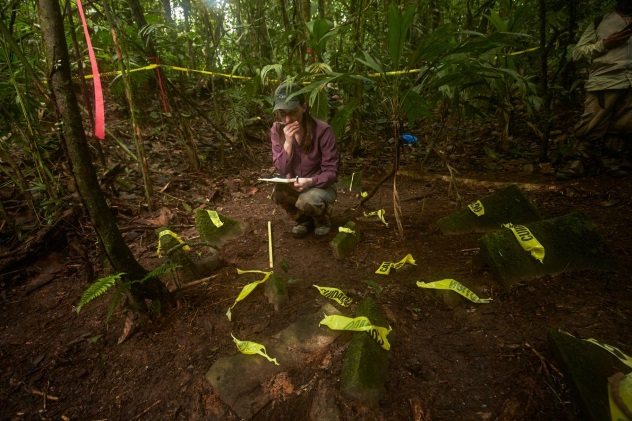
Photo credit: Dave Yoder, National Geographic
In his quest for gold, Hernan Cortes heard rumors that there was a city of great wealth hiding in the jungles of Honduras. It was called the White City by some and the City of the Monkey God by others, and it was promised to hold an incredible fortune.
Cortes never found it—but the legend lived on. Charles Lindbergh claimed he saw it flying over the country, and others spread rumors that they’d found it but, for whatever reason, couldn’t say where it was, and the city remained nothing more than a legend.
Archaeologists may have actually found it. A group followed the path described by one of the crazier people who claimed to have found the place, and to their surprise, they actually found a city where he said it would be. They found a pyramid in a rain forest, built by a culture that had vanished 1,000 years ago. Inside, there were caches of stone sculptures and impressive architecture that, by the standards of their neighbors, would have been considered signs of incredible wealth and power.
Some people doubt whether this is really the city Cortes wrote about, but if nothing else, it’s evidence of a lost civilization of people who lived their entire lives out in the jungle, separated from life, and whose very existence had been all but forgotten until now.
Read more about real legends on 10 Historical Legends That Are Probably True and 10 Mythical Things that Actually Existed.
fact checked by
Jamie Frater
Mark Oliver
Mark Oliver is a regular contributor to Listverse. His writing also appears on a number of other sites, including The Onion’s StarWipe and Cracked.com. His website is regularly updated with everything he writes.
Read More:
Timgad was once a thriving Roman colony

, or Colonia Marciana Ulpia Traiana Thamugadi to the Romans, was once a thriving Roman colony in Algeria. It was founded by Emperor Trajan sometime around 100 AD.
Advertisement
The once-lost city is located in the Aures Mountains of the region and was named in honor of Trajan’s mother Marcia. The city was abandoned after being sacked by the Vandals in the 5th century and then the Berbers in the 7th century.
It was later buried by the sands of the Sahara until its rediscovery and excavation.
Today, it is noted for being a great example of the Roman grid system town planning. It became a UNESCO World Heritage Site in 1982.
Palmyra was once a very wealthy merchant city

or «City of Palm Trees» used to be an influential and wealthy city located in present-day Syria. Some archaeological finds suggest it may have Neolithic origins, but it was first mentioned in the 2nd century BC.
It was eventually conquered by various external powers, including the Romans in the 1st century AD.
The Palmyrenes were renowned and successful merchants who established colonies all along the silk road. After a brief rebellion, the city was leveled by Emperor Aurelian and partially rebuilt by Diocletian.
It was later captured by Muslim Arab invaders in 634 AD and declined under Ottoman Rule to the point of virtual abandonment. The historic city was later rediscovered as an archaeological site by European travelers in the 17th century.
La Ciudad Perdida: Потерянный Колумбийский город
 Около 1300 лет назад древний народ под названием Тайрона построил невероятный город вдоль горных склонов Сьерра-Невада-де-Санта-Марта. Он был воздвигнут на вершине холмов по повелению их бога, который хотел, чтобы они жили поближе к звездам.
Около 1300 лет назад древний народ под названием Тайрона построил невероятный город вдоль горных склонов Сьерра-Невада-де-Санта-Марта. Он был воздвигнут на вершине холмов по повелению их бога, который хотел, чтобы они жили поближе к звездам.
Люди жили там от 700 до 800 лет—до прихода испанских конкистадоров. Тайроны никогда не встречались с ними, но болезни, принесенные испанцами, распространились на Тайрону и уничтожили их. Последние люди в городе умерли, он остался бесплодным, и целая цивилизация была забыта на сотни лет.
Город был открыт только в 1970-х годах, когда группа бандитов, пробираясь через джунгли, случайно наткнулась на него. По чистой случайности они нашли древний, заросший город, полный золотых украшений и нефритовых фигурок.
Они прикарманивали все , что находили, и продавали на черном рынке, где привлекали внимание археологов. Вскоре был найден город, известный только как “Затерянный город”, после почти 500 лет скрытый в джунглях
6 Sigiriya: The Eighth Wonder Of The World

In Sri Lanka, in the fifth century AD, King Kassapa built his palace atop a boulder that was 200 meters (650 ft) tall. According to the legends, it was one of the most incredible castles in the world. To get in, one had to walk up a large staircase that went through the mouth of a massive brick-and-plaster lion.
Kassapa didn’t live in his castle for long. Shortly after it was completed, his brother Mogallana attacked. Kassapa’s army deserted him, terrified for their lives, and his wives leaped off the side of the boulder to their deaths. Sigiriya was conquered and left behind as a monument to the king’s excess. For a while, it became an outpost and, later, a Buddhist monastery, but soon, it was forgotten to time.
When European archaeologists started investigating the story, though, they found out that the castle was real. There really was a massive lion guarding the staircase, and one really had to walk through his mouth to get in.
Inside, it is even more incredible than the legends said. At one part, there is a gleaming white parapet that works a mirror, letting the bloated king stare at his own reflection as he walks through his palace.
UNESCO declared Sigiriya the eighth wonder of the world, and today, it’s a popular tourist destination. But for a long time, it was nothing more than the forgotten ruins of a deposed tyrant.
Ханаду: Дворец Хубилай-Хана

Фото: Zhenglan Qi Administration of Cultural Heritage of the site of Xanadu City
Марко Поло вернулся из Китая с невероятными описаниями империи Хубилай-хана. Но самым невероятным был Ксанаду, дворец великого хана.
Ксанаду, по словам Марко Поло, был мраморным дворцом, окруженным массивным парком шириной 26 километров (16 миль), наполненным фонтанами, реками и дикими животными. Там хан держал 10 000 чистых белых лошадей в золотом дворце, охраняемом драконами. Короче говоря, это был рай, не похожий ни на один другой на Земле.
Дворец был разрушен армией Мин в 1369 году, задолго до того, как большинство европейцев получили возможность увидеть его. По мере того, как проходили века, он превращался в легенду. Это было место, о котором писали поэты, но оно было не более чем плодом воображения.
С тех пор, однако, место дворца Хубилай-хана было обнаружено, и мы обнаружили, что Марко Поло не преувеличивал. Дом хана был в два раза больше Белого дома, окруженный огромным парком, в котором, похоже, когда-то содержался дикий зверинец животных со всего мира.
В каждой его части есть пандусы для лошадей, и там даже есть драконы, описанные Марко Поло. Это статуи, стоящие на колоннах, выкрашенных в желтый цвет, но они поставлены точно так, как он сказал.
